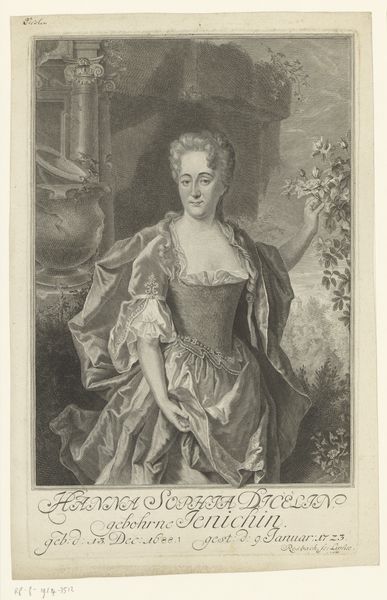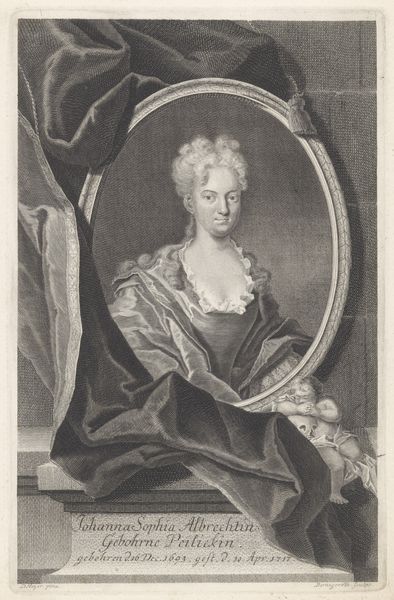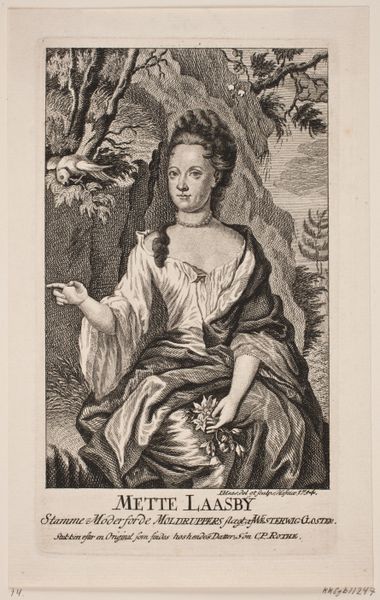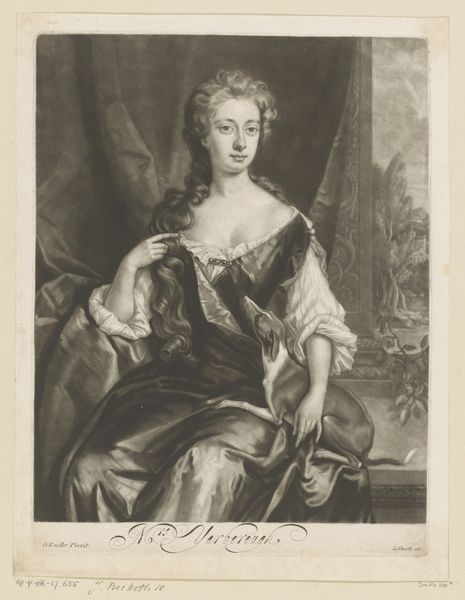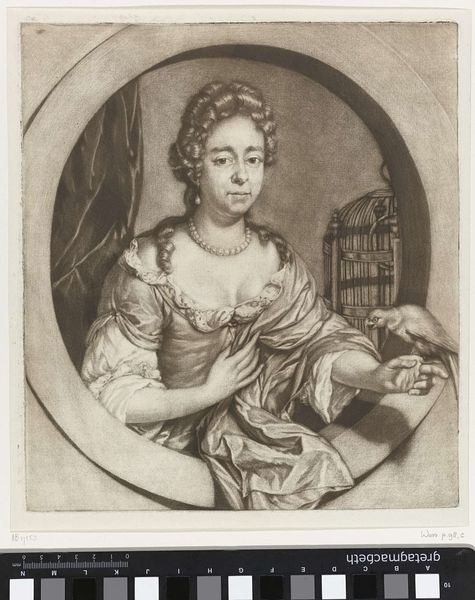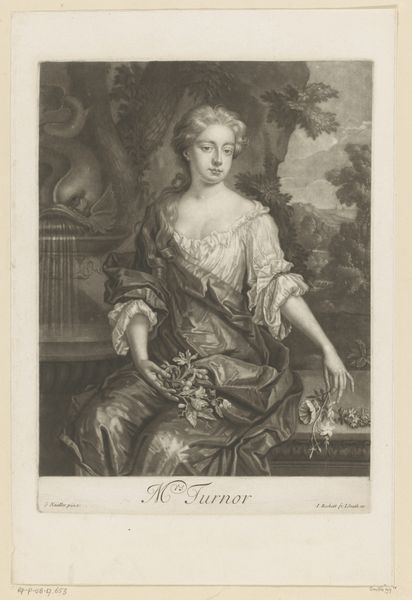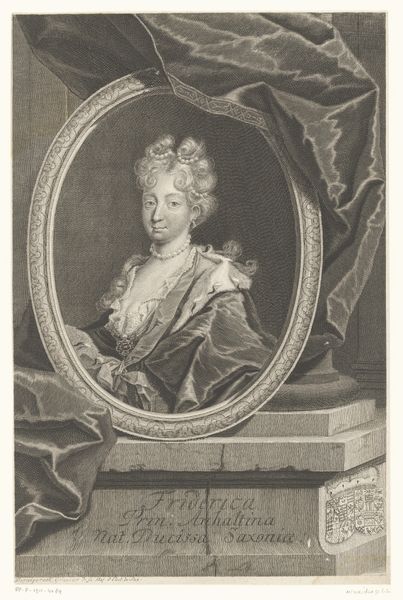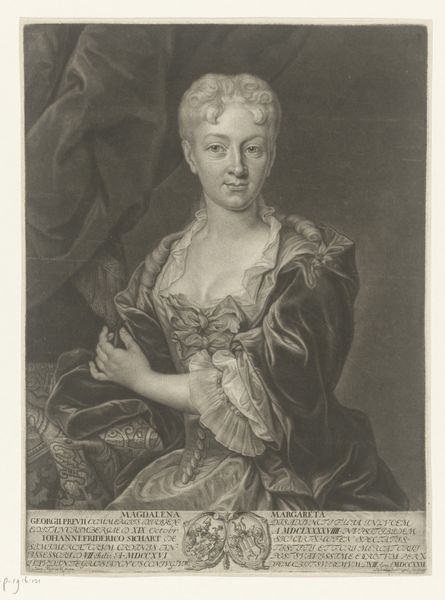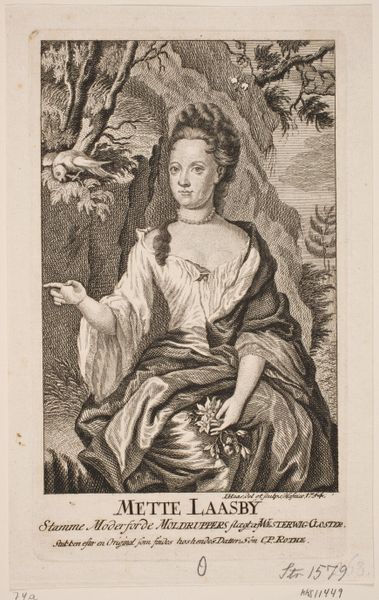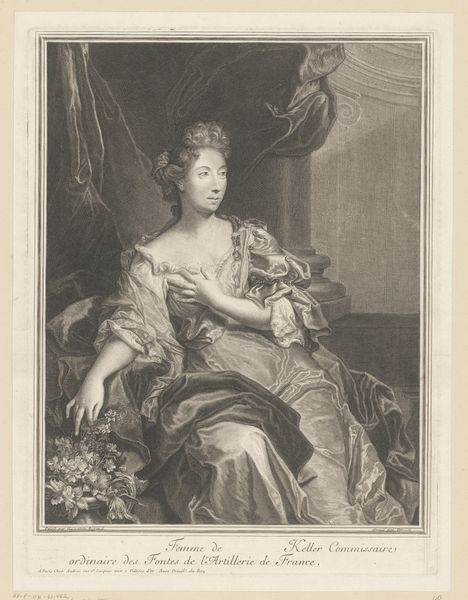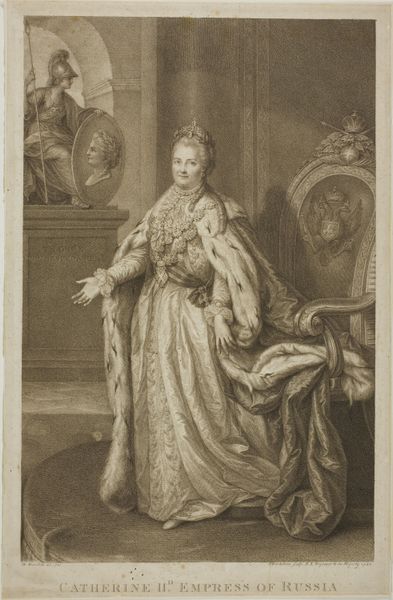
Jeanne Bécu, Comtesse Du Barry, and her servant Zamor c. 1771
0:00
0:00
Dimensions: 402 × 314 mm (image/plate); 445 × 352 mm (sheet)
Copyright: Public Domain
Curator: What a captivating image of 18th-century France. This is a print titled "Jeanne Bécu, Comtesse Du Barry, and her servant Zamor," created around 1771 by Jean Baptiste André Gautier d'Agoty. It currently resides here at the Art Institute of Chicago. Editor: There’s an immediate languid elegance. The softness of the tones, the flow of fabric, even the woman's relaxed gaze... it suggests intimacy and privilege, but also, I feel, a hint of melancholy. Curator: Indeed. The Countess Du Barry was Louis XV's last mistress. This portrait, while seemingly a simple genre scene, speaks volumes about the power dynamics of the time. The inclusion of Zamor, her page of Bengali origin, brings the complex realities of colonialism and enslavement into the picture. Editor: Zamor! Thank you for pointing him out – his presence complicates the scene so profoundly. A dark figure almost obscured, yet vital to the composition and, symbolically, to the Countess's status. The teacup, the flowing robe, they're symbols of a luxurious lifestyle funded, at least in part, by exploitation. It all speaks to an uneven distribution of power. Curator: Precisely! Zamor was not merely a decorative object; he was given to the Countess as a gift, and eventually became involved in the Revolution, even denouncing her during the Reign of Terror. This print then is a snapshot of a world on the brink, a seemingly innocent portrait laden with historical irony and uncomfortable truths. Editor: And visually, the print itself emphasizes those contrasts. The fine, almost delicate lines used to depict the Countess stand in sharp opposition to the more roughly defined shadows enveloping Zamor. This intensifies his marginalization, despite his literal proximity to power. Is this intentional? Curator: Given d'Agoty's context as part of the French court, that conscious framing highlights not only artistic choices, but the embedded assumptions around class, race, and gender of the period that the work illuminates. It shows how artistic mediums and the stories they reflect contribute to complex, broader social narratives. Editor: Thinking about those narrative layers, this print becomes more than just a pretty portrait. It morphs into a haunting document of its time, revealing the uneasy undercurrents of wealth and power with potent, symbolic resonance. It reminds us to look deeper into seemingly innocuous images. Curator: Exactly. The art, then, isn’t just a thing of beauty, but a challenge for us to question what that beauty conceals.
Comments
No comments
Be the first to comment and join the conversation on the ultimate creative platform.
